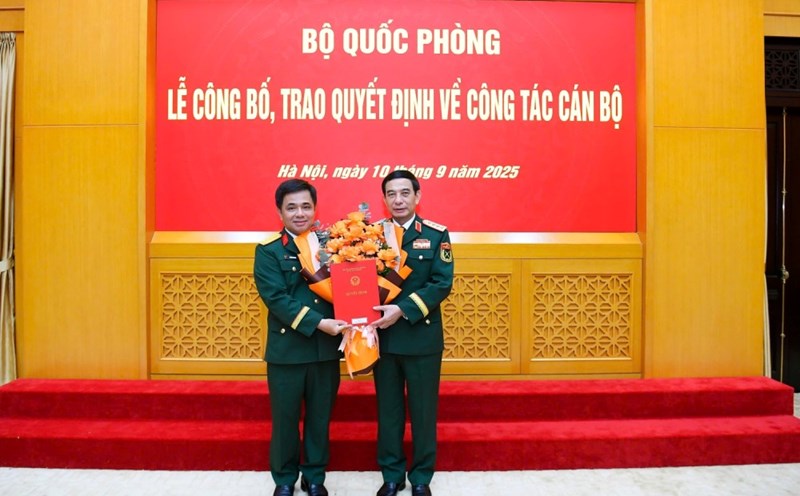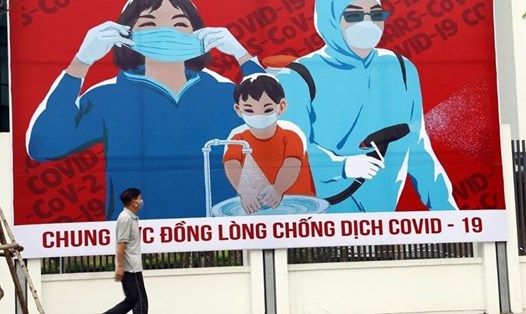Quick, methodical
The article states that, so far, Vietnam, a Southeast Asian country with more than 95 million people, has recorded a total of 1,068 cases of COVID-19, nearly the same as Australia. However, Vietnam has only had 35 deaths due to COVID-19, lower than the figure in Australia's New South Wales. Almost all restrictions in Da Nang, where more than 550 infections broke out at the end of July, have now been lifted.
So, how can Vietnamese authorities once again control the spread of COVID-19, the article asked.
Right from the beginning of the pandemic, the Vietnamese Government has taken a quick and strong response to fight the virus. Flights to and from Vu Han were canceled after the first case was detected in January. By the end of March, the country's borders were almost completely closed. Inspection, contact tracing and a public health campaign in many aspects were quickly mobilized.
Peoples cooperation is an important factor leading to success. From the initial stage, information about the virus and epidemic response strategies has been transparent," the International Monetary Fund said in June.
Professor Guy Thwaites, Director of the University of Oxford Clinical Research Unit based in Ho Chi Minh City, told ABC: Vietnam has had many outbreaks of infectious diseases in the past 20 years. This is not a response using modern technology, but it is implemented very quickly and organized very methodically".
A whopping 97% of Vietnamese people said they support the Government's COVID-19 response, according to a survey by the British survey agency YouGov.
Large-scale response when the epidemic recurs
However, in July, the epidemic broke out again in Da Nang and Vietnam had the first death due to COVID-19 on July 31. The number of infections in the new outbreak has increased to more than 550 - about half of Vietnam's total infections since the start of the pandemic.
Da Nang was blocked, and entry and exit were severely restricted. The authorities have done all the simple things they did last time, but they have done on a large scale and they have done it quickly, said Professor Thwaites. The authorities took samples from 5-6 people or everyone in a family, and conducted a cross-tests. If the results are positive, all samples will be tested separately.
"Thus, Vietnam can test about 100,000 people with only about 20,000 tests. This method helps Vietnam save a lot of time and money" - Professor Thwaites assessed.
WHO said about a third of Da Nang's households have been tested in the period from September 3-10.
Jos Aguiar, an Australian working for a Vietnamese real estate company in Da Nang, told ABC: Blocking is much stricter than the previous time. In our neighborhood, they fence off both sides of the road, which is inconvenient, but I am satisfied with the way Vietnam handles the epidemic.
Ba-Linh Tran, Bath University, and Robyn Klingler-Vidra, University of King's College London - who have studied how the Vietnamese community responds to the pandemic - told ABC that Da Nang people have "contributed money, food and essential goods to the city's largest hospital, which is the focus of this second wave".
The two authors said that most Vietnamese people are self-conscious, so there is almost no feeling of being forced to do anything. Disoking, social isolation, isolation, closing down... are simply tools and measures to keep everyone and their loved ones safe.
Resurrection of life
Professor Thwaites said that life has returned to normal after the epidemic. Flights to Da Nang resumed in early September. Many days later, people can swim again. Last week, the Prime Minister announced that flights between Vietnam and Seoul, Guangzhou, Taipei (Taiwan, China) and Tokyo will resume.
Vietnam is still expected to be one of the few countries to continue growth in 2020, while the rest of the world is in recession, said PricewaterhouseCoopers.
The Asian Development Bank forecasts that Vietnam's economy will grow by 1.8% this year, becoming one of the only Southeast Asian economies that has not been recessioned - ABC's article said.







